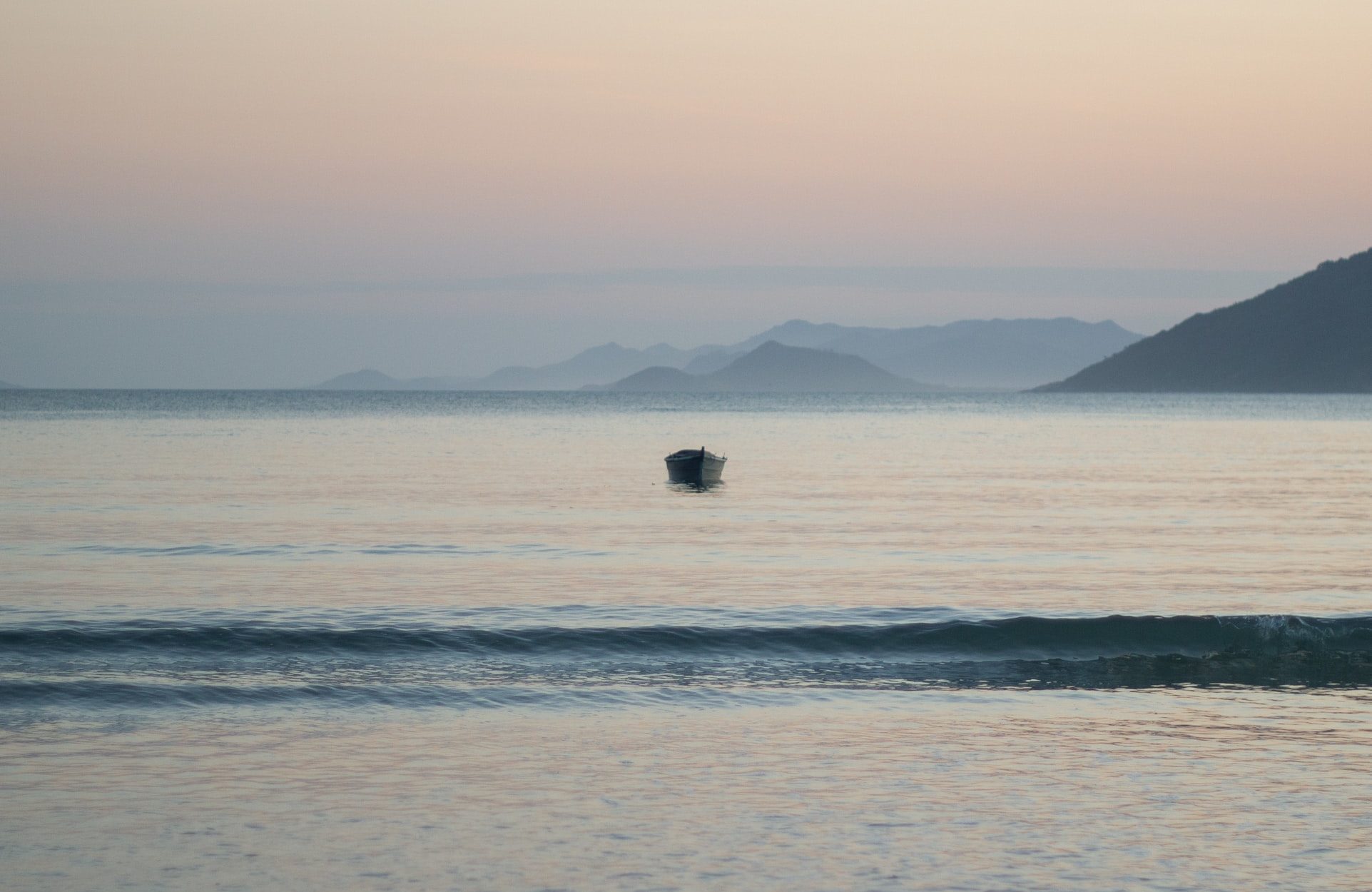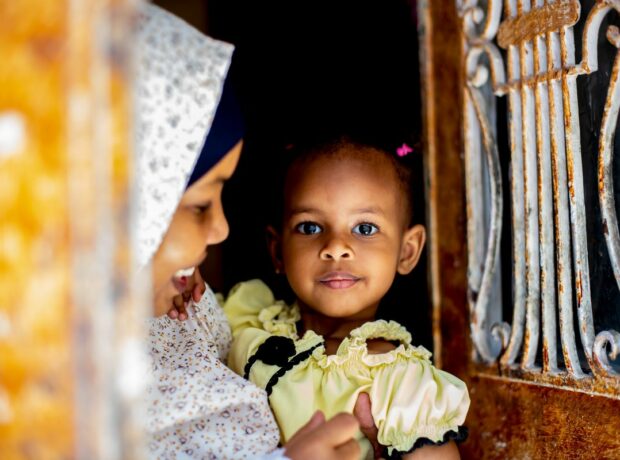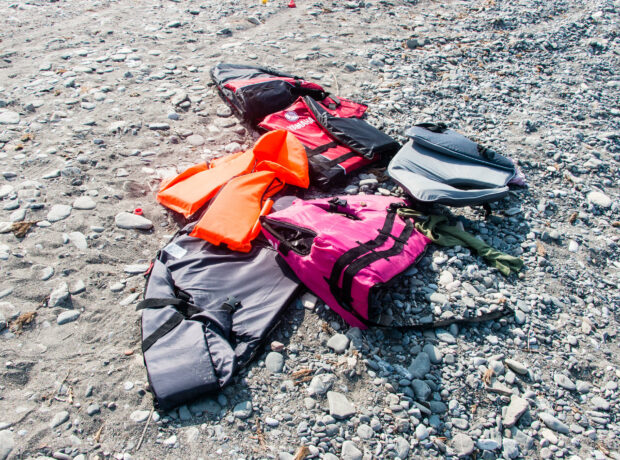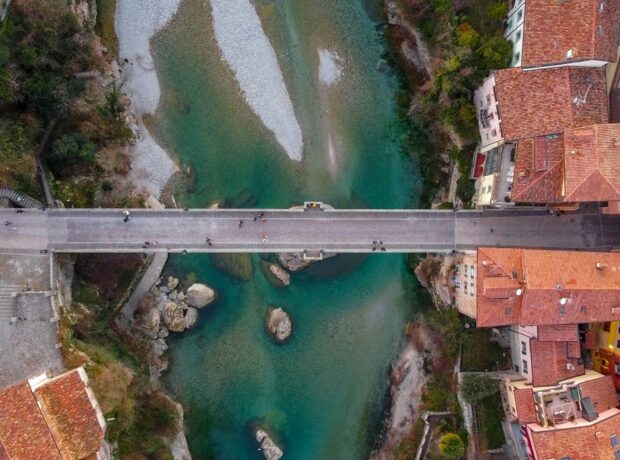How is the coronavirus pandemic affecting refugees seeking safety in Europe? And as the continent is pre-occupied with internal affairs, are some countries using COVID-19 as an excuse to refuse sea rescues and enforce anti-immigration strategies? Maurice Stierl considers the current situation in the Mediterranean and the response from Italy, Malta, Libya and the EU.
“You have to understand,” Warsan Shire writes in her poem Home, “that no one puts their children in a boat, unless the water is safer than the land.”
But what do you do when not only the land of departure but also the land of arrival becomes unsafe?
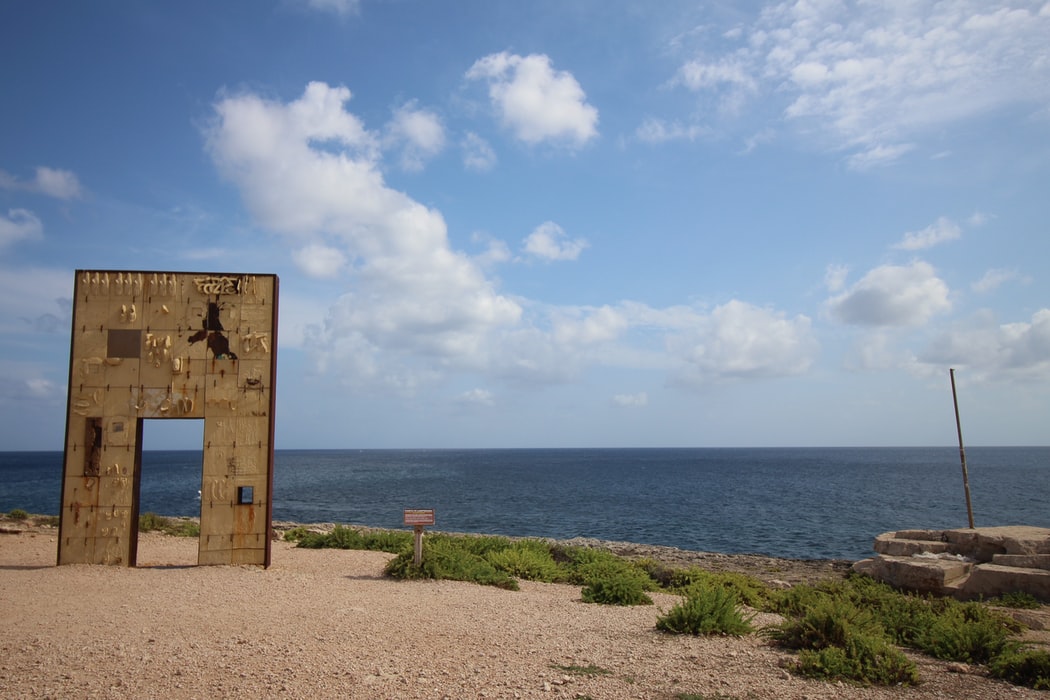
Gate of Europe, Lampedusa, Italy. Fortress Europe: Malta declared its harbours unsafe for migrants to disembark during the coronavirus pandemic. Photo by Enrica Tancioni.
In the middle of the COVID-19 pandemic, some European countries have begun to implement a new strategy to reject migrants travelling on precarious boats: declaring themselves unsafe.
On April 7, and for the first time in history, Italy announced that due to the health emergency, Italian harbours could no longer be considered “safe places” for migrant landings. Two days later, Malta followed suit, stating it would be in the migrants’ own interest not to endanger their lives at sea.
As a result, hundreds of migrants have been stuck at sea in the past few weeks, somewhere between war-torn Libya and “unsafe” Europe. Some were eventually rescued by commercial vessels but barred from entering European harbours. Others were left adrift on flimsy boats.
One group of 63 people was stranded at sea when their engine failed them in the Maltese Search and Rescue zone in mid-April. European authorities were informed about their distress and for days Malta, and the EU border agency Frontex, observed them from the sky. With no help sent, some starved to death on board and others drowned, according to one of the survivors who spoke to the activist network Alarm Phone:
We shouted for help and made signs. Three people tried to swim to this big boat as it started moving away. They drowned. We made signs to the aircraft with the phones and we held the baby up to show we were in distress.
Eventually, after days with no help, the Maltese authorities orchestrated a secret operation to push the migrants back to Libya, carried out by a small fleet of private fishing trawlers. During their involuntary journey back to Libya, three other individuals are reported to have died, bringing the total number of fatalities to 12.
The UN High Commissioner for Human Rights expressed deep concern, and a Maltese NGO triggered a criminal enquiry against Malta’s prime minister, Robert Abela, over the deaths and the forced return of survivors to Libya. Responding to the accusations, Abela defended the government’s actions by alluding to its responsibility to ensure the health of “all the Maltese” through restrictions on immigration.
Blame game
In the aftermath of yet another catastrophic failure to prevent lives from being lost at sea, a familiar game of deflection has ensued, with EU institutions and member states rejecting responsibility.
Shifting blame to smuggling networks, though still a common strategy, has been complicated by revelations of Europe’s close collaborations with these very networks.
In the past, politicians have cited the pull-factor theory, which argues that the presence of NGO rescuers off North African coasts encourages migrants to make the journey across the Mediterranean. But this theory has also lost persuasive power given the fact that migrant departures are continuing despite the current absence of NGOs at sea due to the coronavirus crisis.
Without NGO rescuers left to blame, Malta accused the EU and its member states of failing to act, insisting that the new migrant arrivals were “not Malta’s problem”.
Read more: In times of crisis, refugees cannot survive on compassion alone
United in migrant deterrence
These deflections of responsibility and tensions between EU member states and institutions over migration have become commonplace. And yet, in reality, Europe is largely united in its efforts to militarise its border over the past five years. As I have argued in a recent study, both EU member states and institutions have worked hand-in-hand to turn Europe into a hostile environment for migrants seeking protection.
The European Commission was not wrong to state in 2019 that in matters of border security: “We have made more progress in the space of four years than was possible in the 20 years preceding them.”
Agreements with Libyan authorities, including militia groups, have led to the interception of tens of thousands of people at sea, often after being spotted in the air by the EU operation SOPHIA or by Frontex. In this way, Europe has militarised its borders in full awareness of the systematic violation of migrants’ rights in Libya, including forms of rape and torture, that have been documented for years.

A protest in Bonn, Germany, on the rights of migrants. Photo by Mika Baumeister.
Every theatrical plea to the EU by a member state demanding more support distracts from this reality of a rapidly militarising European border that has dramatically brought down migrant arrivals. Despite characterisations of Mediterranean migration as an ongoing crisis, data on migrant crossings shows that 2020 could see the lowest number of arrivals in a decade.
Read more: How can we trace and name each refugee who has drowned in the Mediterranean?
Italy and Malta’s declaration of their harbours as unsafe should not be viewed as an exceptional measure during an exceptional time but as part and parcel of continuous, and collectively European, efforts to reinforce anti-migrant deterrence measures.
Those languishing in Libyan torture camps or drowning off Europe’s coasts must regard deterrence in the name of “unsafe Europe” for what it is: yet another cynical way to keep them away and deprive them of safety, no matter the cost.
This article is republished from The Conversation under a Creative Commons license. Read the original article here.
Main image by Cassiano Psomas.
